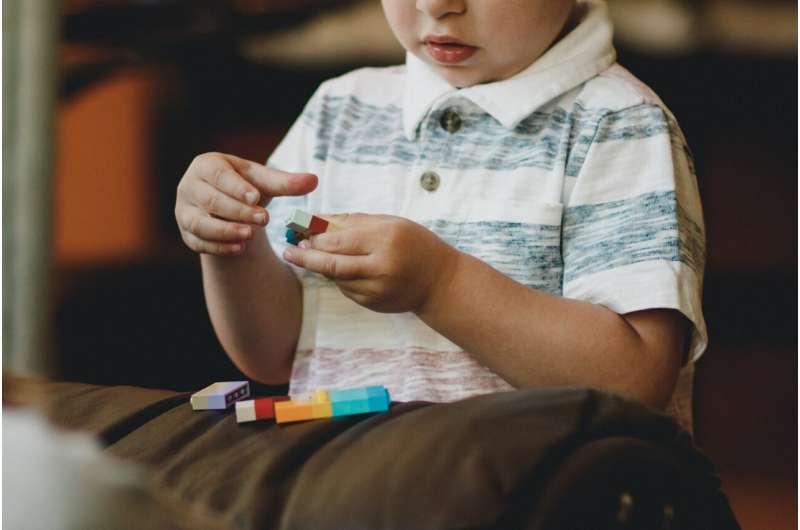This article has been reviewed according to Science X's editorial process and policies. Editors have highlighted the following attributes while ensuring the content's credibility:
fact-checked
trusted source
proofread
Analysis shows shifting demographics of children identified with autism

One in 40 Utah children aged eight years have been identified with autism spectrum disorder (ASD), according to a newly published analysis led by the U.S. Centers for Disease Control and Prevention in collaboration with scientists across the country including at Huntsman Mental Health Institute.
For years, previous reports consistently found that white children had the highest rates of autism. But for the first time, the new analysis found that among Utah children in this age group, rates were equal in white children and children from historically underserved populations, including Hispanic and Pacific Islanders.
For the second year in a row, the analysis also reported that autism was more prevalent in children from lower income households than children from higher income households, a reversal from years prior.
The shift in demographics is good news, say HMHI researchers who led the Utah portion of the study.
The trends may signal that, due to improvements, families from historically underserved populations in Utah can access diagnostic services more readily than in the past, says Amanda Bakian, Ph.D., associate professor of psychiatry at HMHI.
"We know that we are doing a better job of identifying ASD early," explains Deborah Bilder, M.D., professor of psychiatry at HMHI. She co-led the Utah study with Bakian. "In addition, there have been improvements in access to services across Utah's populations."
The changing rates of autism are a telling phenomenon happening in many regions of the U.S. "For years, we wondered whether the higher prevalence we had seen in white children was due to a biological phenomenon," Bakian says. The new report, along with other evidence, indicates that autism actually is common across all groups of children.
The report reveals additional details, including data suggesting that autism is underdiagnosed in young children in Utah.
The CDC published two reports, one focusing on ASD prevalence in 8-year-olds in 2020. The data come from 11 sites across the country, including Utah. Additional key findings are:
- 1 in 36 or 2.8% of children across all 11 sites were identified with autism, which is similar to the rate in Utah.
- In Utah, and across all sites, boys were 3.2 to 3.8 times more likely to be identified with autism than girls.
reports data from 4-year-olds, which is used to assess efforts to diagnose autism early. Data from Utah suggests that services have improved for all young children, Bilder says.
- In Utah in 2020, the prevalence of Hispanic children identified with autism rose compared to previous years and now exceeds the rate in white children.
- 4-year-olds were more likely to have been identified with autism by 48 months of age than 8-year-olds when they were that age.
These data may indicate that autism is underdiagnosed in young children in Utah, due in part to the COVID-19 pandemic, according to Bilder.
- Of the 11 sites, Utah had the lowest rate of autism in this age group.
- Of the 11 sites, Utah had among the highest number of children who were suspected to have autism but had not yet received a diagnosis.
- After the start of the COVID-19 pandemic in March 2020, the rate of children identified with ASD slowed down.
Bakian and Bilder credit Utah legislators for enacting policies and legislation in recent years that have broadened the reach of diagnostic services to children who are the most vulnerable.
Early autism diagnosis and treatment optimizes children's ability to learn, engage with others, and develop independence. Toward that end, the CDC has funded autism surveillance in Utah for another four years and is emphasizing its "Learn the Signs. Act Early" program. The program helps parents and caregivers monitor children's development and share information with health care providers.
"We've definitely made progress," Bilder says. "Yet, there is still room for improvement in diagnosing autism at the youngest possible age."





















